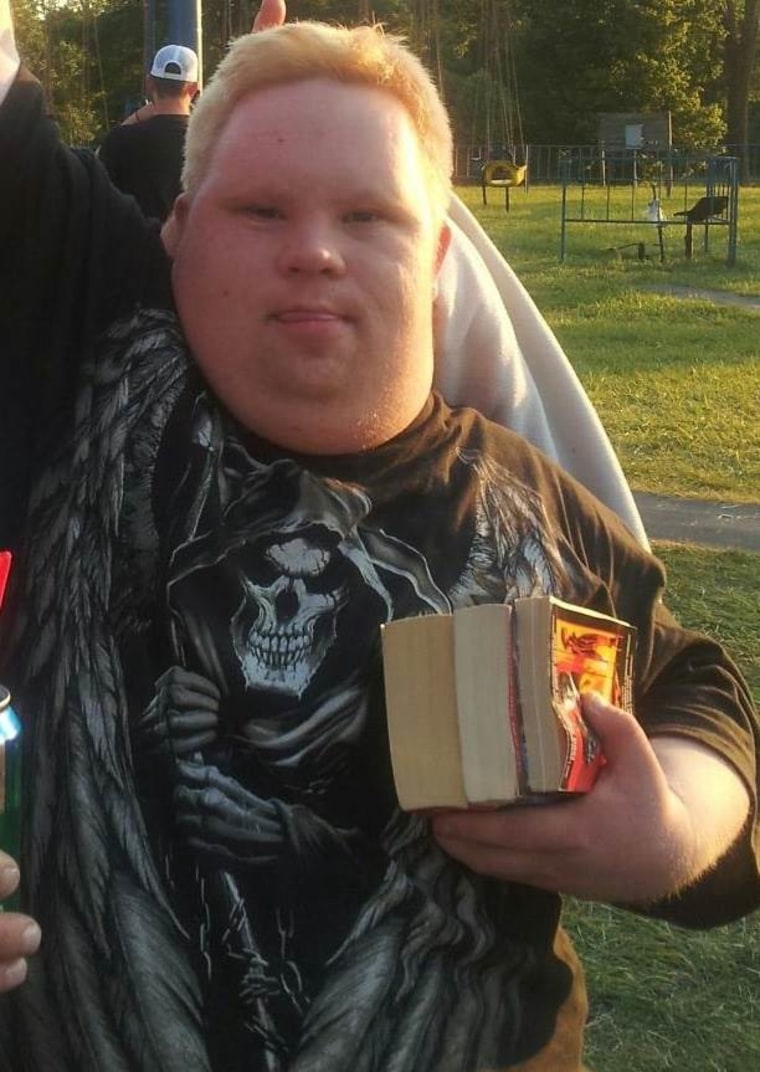Almost half of the people who die at the hands of police have some kind of disability, according to a new report, as officers are often drawn into emergencies where urgent care may be more appropriate than lethal force.
The report, published by the Ruderman Family Foundation, a disability organization, proposes that while police interactions with minorities draw increasing scrutiny, disability and health considerations are still neglected in media coverage and law enforcement policy.
"Police have become the default responders to mental health calls," write the authors, historian David Perry and disability expert Lawrence Carter-Long, who analyzed incidents from 2013 to 2015. They propose that "people with psychiatric disabilities" are presumed to be "dangerous to themselves and others" in police interactions.

The report wades directly into the racial debates over policing, noting that while coverage of police brutality cases has understandably “focused on race,” that lens can also obscure how disability also factors into police interactions.
Take one of the most discussed recent police brutality cases — the Chicago Police shooting of LaQuan McDonald, a black teenager killed while acting erratically and holding a knife. Prosecutors took the unusual step of charging an officer with first degree murder, noting McDonald did not pose a lethal threat to the officers who had surrounded him. When video of the shooting was released, it sparked the resignation of Chicago's police chief and a national debate over race and policing.
"Police have become the default responders to mental health calls"
There was far less focus, however, on McDonald’s health. According to a later investigation by the Chicago Tribune, McDonald suffered from PTSD and "complex mental health problems."
That reality may be relevant to his conduct the night of his death — and ways the police might have de-escalated the interaction.
According to law enforcement experts, it is crucial that officers precisely evaluate the problems a suspect may be experiencing.
“Officers are action-oriented people,” says Jim Cavanaugh, a former federal agent and MSNBC analyst. “The training always has to be a slow evaluation — if possible.”
If other mechanisms to help people with disabilities or mental illness have failed, Cavanaugh suggested, often its police who end up facing that breakdown in an emergency scenario.
“Every crisis in this society,” he says, “always gets dumped right in front of the officer.”
The report also cites the tragic example of Ethan Saylor, a 26-year-old with Down syndrome who was simply trying to spend a day at the movies when he was killed in 2013.
Saylor had purchased a ticket to see “Zero Dark Thirty,” but when he tried to stay in the theater for a second showing of the movie, he got into an altercation with the theater’s security.
"Every crisis in this society always gets dumped right in front of the officer."
Saylor was unarmed, and three off-duty Frederick County deputies, working as security guards, restrained and dragged him from the theater until he died of asphyxiation.
Saylor could be heard screaming “mommy, mommy,” “it hurts,” according to a lawsuit filed by his family. Authorities ruled the death a homicide. A Maryland grand jury declined, however, to indict the officers.
The report compares Saylor’s case to several other instances where police used force on non-compliant individuals with Down syndrome. The implication is that using force to address compliance – an option in conventional policing — is counterproductive without careful attention to a suspect’s health or cognitive abilities.
The authors recommend police adopt specific training to address people with disabilities, and they argue that public discussion of police brutality should consider the intersection of disability, class and race in scrutinizing police use of force.

Some police departments are experimenting with new approaches. In August, Phoenix Police launched an entire squad, the Crisis Intervention Team, devoted to responding to emergencies that involve mental health issues.
The initiative grew out of concerns that in Phoenix, roughly one out of ten officer-involved shootings were of suspects with mental illness. There was also intense local outrage after the 2014 fatal police shooting of Michelle Cusseaux, a woman who had been diagnosed with schizophrenia and bipolar disorder.
Police came to Cusseaux’s house to transfer her to a mental health facility, under a court’s orders, but when she allegedly charged at an officer with a hammer, he shot her dead.
Many criticized the incident as an avoidable escalation, and an example of a scenario where police need better preparation to address a foreseeable disability emergency.
